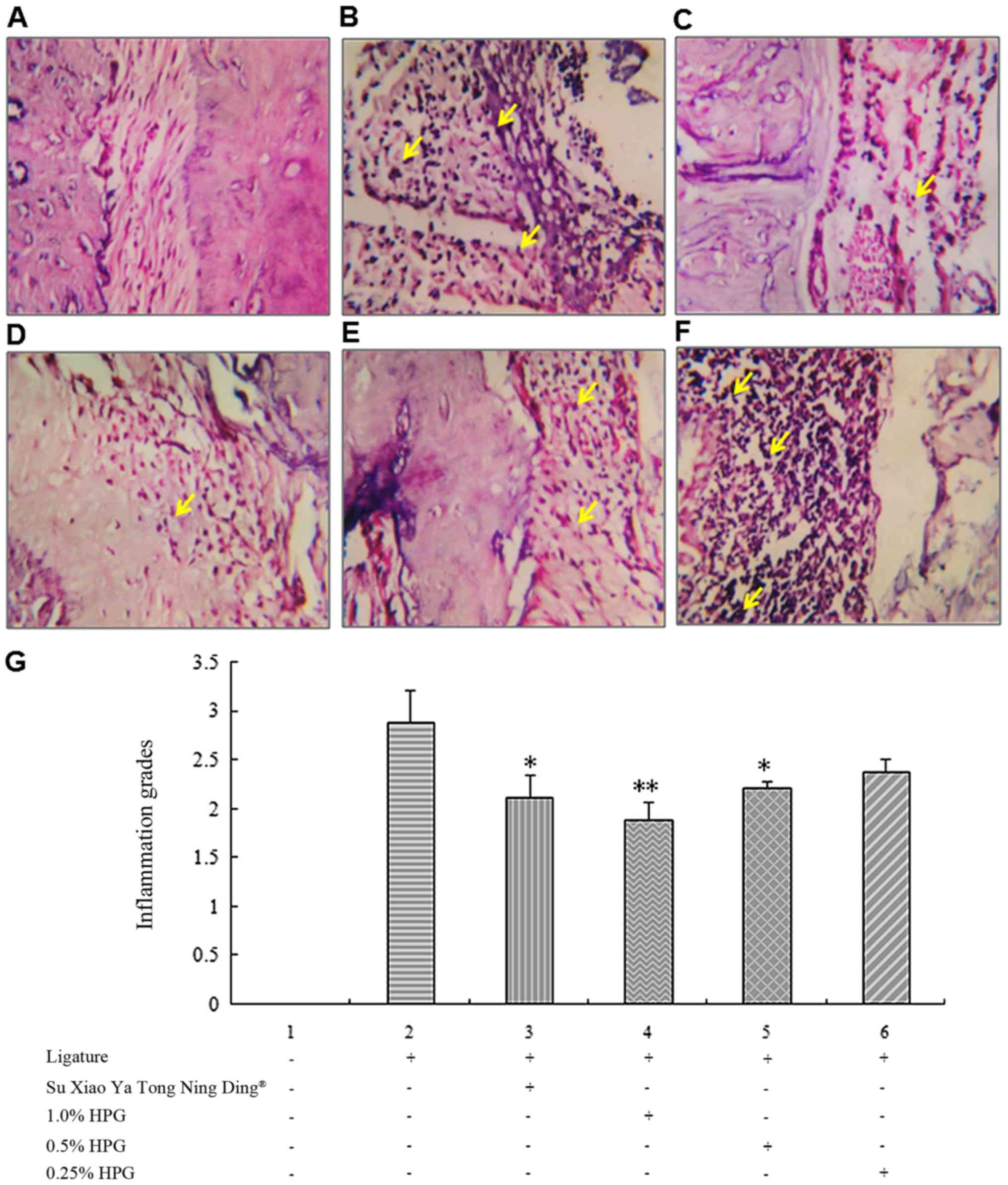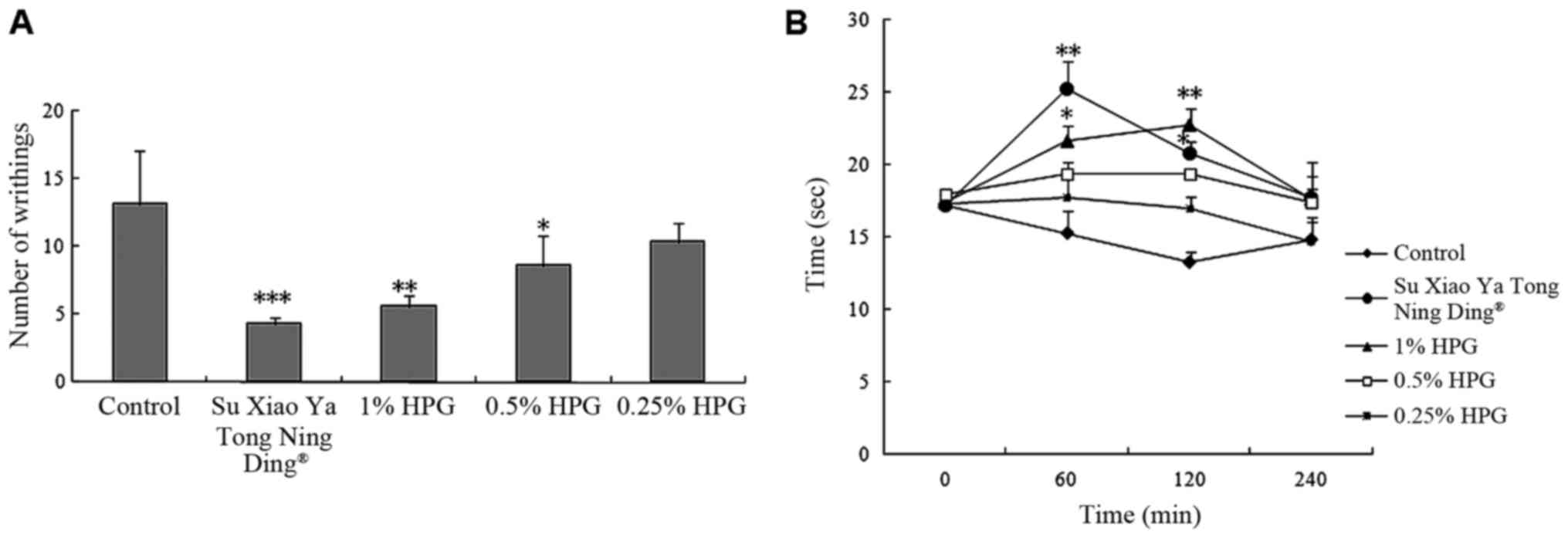Evaluation of the efficacy of Hylotelephium purpureum gel in the treatment of experimental periodontitis
- Authors:
- Published online on: February 14, 2018 https://doi.org/10.3892/br.2018.1065
- Pages: 378-384
Metrics:
Total
Views: 0 (Spandidos Publications: | PMC Statistics:
)
Total PDF Downloads: 0 (Spandidos Publications: | PMC Statistics:
)
Abstract
Local drug delivery systems have been proposed for the treatment of periodontitis, and Hylotelephium purpureum may be a suitable agent for use in such a system. The present study aimed to formulate a Hylotelephium purpureum gel (HPG) and evaluate the anti‑inflammatory activity and antinociceptive effects of Hylotelephium purpureum and to assess the duration of action and efficacy of HPG in the treatment of experimental periodontitis in a KM mouse model. First, an acute toxicity study was performed, and secondly, xylene‑induced mouse‑ear edema, acetic acid‑induced mouse peritoneal capillary permeability and carrageenan‑induced hind‑paw edema tests were used to investigate the anti‑inflammatory activity of the gel. The acetic acid‑induced writhing response and hot‑plate tests were used to evaluate the antinociceptive activity. The therapeutic effects of HPG in experimental periodontitis were evaluated and minimum inhibitory concentration of the gel was determined. The results showed that intragastrically administration of 80 ml/kg of HPG produced no toxic effects. There were statistically significant changes in gingival indexes and sulcus bleeding indexes in the high‑dose HPG‑treated group. The serum levels of superoxide dismutase and glutathione peroxidase were significantly heightened, while the level of malondialdehyde was decreased. HPG exhibited 32.7% inhibition of edema, and altered the peritoneal capillary permeability in mice. The gel had relatively good bacteriostatic and bactericidal effects. It also exhibited antinociceptive activity, as demonstrated by the acetic acid‑induced writhing response test and hot‑plate test. In summary, the present study demonstrates that HPG is effective in the treatment of experimental periodontitis.












